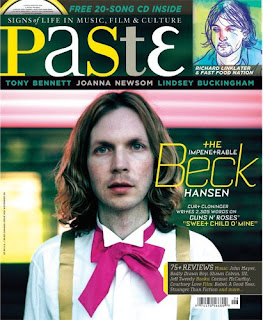Institutions – How does the magazine
industry work?
Positions in the music industry vary
depending on the magazine, however they all have the similar basic staff
roles. People who work with word and
images, these people carry out editorial functions, which create the editorial
product.
Editor positions:
·
Editor in Chief
·
Managing Editor
·
Production Manager + Production Assistants
·
Executive Editors (magazine’s
not always have them)
Editor in Chief
The editor in chief of the top editorial
position at a magazine and is responsible for directing all content and
implementing the mission of the magazine. He/she handles and controls the
relevance of components going into the magazine as well as checking grammar and
aesthetics in documents and articles appearing in the specified medium. This
job also involves relationship building and communicating with authors.
Managing Editor
The managing editor is responsible for the
total quality of the published material, for supervising, directing the
activities of the support staff and coordinating publication through editing,
writing and producing manuals and related materials. Their duties are to over
see the process of publication communication with authors, writers, and indexers,
also to coordinate this process. She/he has to inspect proofs for accuracy supervises
subordinate staff, serve as liaison between units or departments, publishers,
printers and authors. Another duty they have is to manage budget and assist
preparations of promotional material.
Production Manager + Production
Assistants
A production manager ensures that goods and
services are produced efficiently. They ensure the correct amount is produced
at the right cost and at the right level of quality.
Typical work activities
The exact nature of the work will depend on
the size of the employing organisation. However, tasks typically involve:
•
overseeing the production
process, drawing up a production schedule;
•
ensuring that the production is
cost effective;
•
making sure that products are
produced on time and are of good quality;
•
working out the human and
material resources needed;
•
drafting a timescale for the
job;
•
estimating costs and setting
the quality standards;
•
monitoring the production
processes and adjusting schedules as needed;
•
being responsible for the
selection and maintenance of equipment;
•
monitoring product standards
and implementing quality-control programmes;
•
liaising among different
departments, e.g. suppliers, managers;
•
working with managers to
implement the company's policies and goals;
•
ensuring that health and safety
guidelines are followed;
•
supervising and motivating a
team of workers;
•
reviewing the performance of
subordinates;
•
identifying training needs.
Executive Editor
Executive editors must exhibit the ability
to effectively manage subordinates and assistant editors. Depending on the size
of the publication, the executive editor is to ensure that the publication's
content is in line with its mission. This is done by coordinating with the
assistant editors, who take this information back to their subordinates. In
addition, the executive editor approves the hiring of newsroom staff members,
performs conduct appraisals and is an editorial staff disciplinarian.
Once articles are written, copy editors
read them to correct errors in fact, grammar, spelling, and punctuation; to
eliminate problems in organization, clarity, and style; and to ensure that the
piece reflects the content and tone of the mission of a magazine. The
copyediting staff, often referred to by the traditional newspaper term
"the copy desk," is managed by the copy chief. Entry-level positions
on the copyediting staff include proofreaders and fact checkers.
The visual side of the editorial department
is supervised by the art director, who works closely with the editors to carry
out the unique look of a magazine. They make all the assignment for
photographers, photo stylists and illustrator but also manages the designers
who make the lay out of the editorial pages. There are also titles such as
senior designer; staff artists, junior designer and art assistant.
The advertising sales staff is also supported by people who provide
expertise in both business and creativity. The marketing director designs a
sales strategy to attract advertisers. The research director gathers
information about a magazine's readership to help advertisers better understand
and appreciate the audience they will be reaching. The public relations
director works to promote a magazine's image among its various constituents—readers,
advertisers, and others in the magazine industry. The promotion director
prepares sales materials such as board presentations, brochures, and videos
that sales representatives use to help sell advertising. The merchandising
director develops and implements "value-added" programs to enhance
the marketing programs of advertisers. All of these sales support directors
employ assistants to help carry out their jobs; the promotion and merchandising
directors also manage artists and copywriters to prepare materials related to
their work.
Of
course there other career also can be found in this industry such as,
circulation, distribution, technical support, finance and accounting
departments. There is also newly introduced position which is online editing
who designs and oversees the contents of the website of the magazine.











